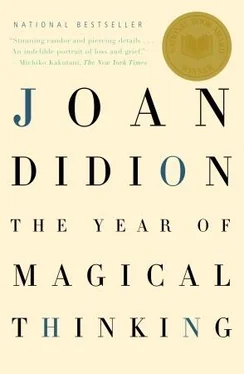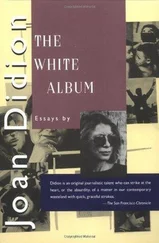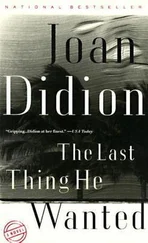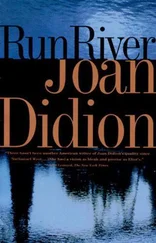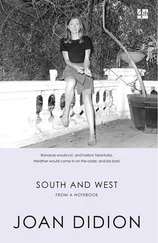The next day, March 24, alone in the apartment, the obligation to bury my husband and see our daughter through her crisis formally fulfilled, I put away the plates and allowed myself to think for the first time about what would be required to restart my own life. I called Quintana to wish her a good trip. She was flying early the next morning. She sounded anxious. She was always anxious before a trip. Decisions about what to pack had seemed since childhood to trigger some fear of lost organization. Do you think I’ll be okay in California, she said. I said yes. Definitely she would be okay in California. Going to California would in fact be the first day of the rest of her life. It occurred to me as I hung up that cleaning my office could be a step toward the first day of the rest of my own life. I began doing this. During most of the following day, Thursday, March 25, I continued doing this. At points during the quiet day I found myself thinking that possibly I had come through into a new season. In January I had watched ice floes form on the East River from a window at Beth Israel North. In February I had watched ice floes break up on the Hudson from a window at Columbia-Presbyterian. Now in March the ice was gone and I had done what I had to do for John and Quintana would come back from California restored. As the afternoon progressed (her plane would have landed, she would have picked up a car and driven up the Pacific Coast Highway) I imagined her already walking on the beach with Gerry in the thin March Malibu sunlight. I typed the Malibu zip code, 90265, into AccuWeather. There was sun, a high and low I do not remember but do remember thinking satisfactory, a good day in Malibu.
There would be wild mustard on the hills.
She could take him to see the orchids at Zuma Canyon.
She could take him to eat fried fish at the Ventura County line.
She had arranged to take him to lunch one day at Jean Moore’s, she would be in the places in which she had spent her childhood. She could show him where we had gathered mussels for Easter lunch. She could show him where the butterflies were, where she had learned to play tennis, where she had learned from the Zuma Beach lifeguards how to swim out of a riptide. On the desk in my office there was a photograph taken when she was seven or eight, her hair long and blonde from the Malibu sun. Stuck in the back of the frame there was a crayoned note, left one day on the kitchen counter in Malibu: Dear Mom, when you opened the door it was me who ran away XXXXXX — Q.
At ten minutes past seven that evening I was changing to go downstairs, for dinner with friends who live in the building. I say “at ten minutes past seven” because that was when the phone rang. It was Tony. He said he was coming right over. I noted the time because I was due downstairs at seven-thirty but Tony’s urgency was such that I did not say so. His wife, Rosemary Breslin, had spent the past fifteen years dealing with an undiagnosable blood disorder. Since shortly after John died she had been on an experimental protocol that had left her increasingly weak and required intermittent hospitalization at Memorial Sloan-Kettering. I knew that the long day at the Cathedral and later with the family had been strenuous for her. I stopped Tony as he was about to hang up. I asked if Rosemary was back in the hospital. He said it was not Rosemary. It was Quintana, who, even as we spoke, at ten minutes past seven in New York and ten minutes past four in California, was undergoing emergency neurosurgery at UCLA Medical Center in Los Angeles.
They had gotten off the plane.
They had picked up their shared bag.
Gerry was carrying the bag to the car rental shuttle, crossing the arrivals driveway ahead of Quintana. He looked back. Even today I have no idea what made him look back. I never thought to ask. I pictured it as one more case in which you heard someone talking and then you didn’t, so you looked. Life changes in the instant. The ordinary instant. She was lying on her back on the asphalt. An ambulance was called. She was taken to UCLA. According to Gerry she was awake and lucid in the ambulance. It was only in the emergency room that she began convulsing and lost coherence. A surgical team was alerted. A CT scan was done. By the time they took her into surgery one of her pupils was fixed. The other became fixed as they wheeled her in. I would be told this more than once, in each case as evidence of the gravity of the condition and the critical nature of the intervention: “One pupil was fixed and the other went as we wheeled her in.”
The first time I heard this I did not know the significance of what I was being told. By the second time I did. Sherwin B. Nuland, in How We Die, described having seen, as a third-year medical student, a cardiac patient whose “pupils were fixed in the position of wide black dilatation that signifies brain death, and obviously would never respond to light again.” Again in How We Die, Dr. Nuland described the failing attempts of a CPR team to revive a patient who had suffered cardiac arrest in the hospital: “The tenacious young men and women see their patient’s pupils become unresponsive to light and then widen until they are large fixed circles of impenetrable blackness. Reluctantly the team stops its efforts…. The room is strewn with the debris of the lost campaign.” Was this what the New York — Presbyterian ambulance crew saw in John’s eyes on our living room floor on December 30, 2003? Was this what the UCLA neurosurgeons saw in Quintana’s eyes on March 25, 2004? “Impenetrable blackness?” “Brain death?” Was that what they thought? I look at a printout of that day’s CT report from UCLA and still go faint:
The scan shows right hemispheric subdural hematoma, with evidence of acute bleeding. Active bleeding cannot be excluded. The hematoma causes marked mass effect upon the right cerebrum, subfalcial and early uncal herniation, with 19 mm of midline shift from right to left at the level of the third ventricle. The right lateral ventricle is subtotally effaced and the left lateral ventricle shows early entrapment. There is moderate to marked midbrain compression and the perimesencephalic cistern is effaced. A thin posterior falcine and left tentorial subdural hematomas are noted. A small parenchymal bleed, likely contusional, is noted in the right inferolateral frontal lobe. The cerebellar tonsils are at the level of the foramen magnum. There is no skull fracture. There is a large right parietal scalp hematoma.
March 25, 2004. Ten minutes past seven in the evening in New York.
She had come back from the place where doctors said “We still don’t know which way this is going” and now she was there again.
For all I knew it had already gone the wrong way.
They could have told Gerry and Gerry could be trying to absorb it before calling me.
She could already be on her way to the hospital morgue.
Alone. On a gurney. With a transporter.
I had already imagined this scene, with John.
Tony arrived.
He repeated what he had told me on the telephone. He had gotten the call from Gerry at UCLA. Quintana was in surgery. Gerry could be reached by cell phone in the hospital lobby, which happened to double (UCLA was building a new hospital, this one was overcrowded and outdated) as the surgical waiting area.
We called Gerry.
One of the surgeons had just come out to give him an update. The surgical team was now “fairly confident” that Quintana would “leave the table,” although they could not predict in what condition.
I remember realizing that this was meant as an improved assessment: the previous report from the operating room had been that the team was “not at all sure she would leave the table.”
Читать дальше
Конец ознакомительного отрывка
Купить книгу
